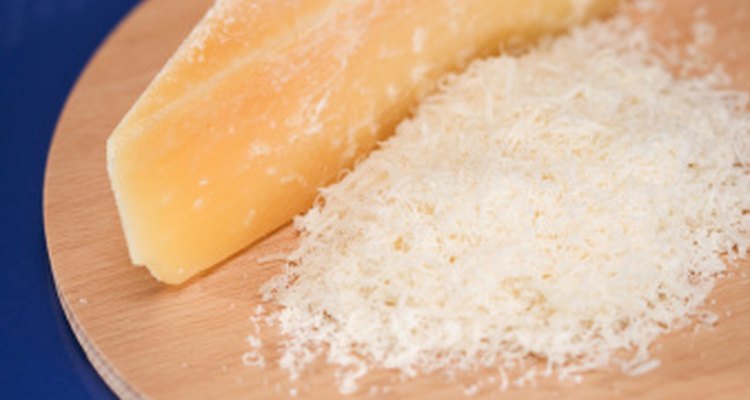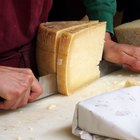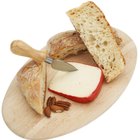
It is hard to distinguish between Romano and parmesan cheeses until you try them, though even then it can be tricky as both have intense, sharp flavors. Despite the many similarities between the two, Parmesan is by far the more famous cheese.
Origin
Real Parmesan must be made in the Parma region of Italy, hence the proliferation of Parmesan-style cheeses on the market. Romano cheese was traditionally made in the countryside surrounding Rome, though today it is mostly made in Sardinia with some manufacturers based in the U.S.
Ingredients
Romano cheese is an Italian cheese made from goat’s or sheep’s milk, the latter being known as “pecorino romano." In the U.S., it is sometimes made from cow’s milk, which gives it a much milder flavor. It should mature for at least five months before being sold for consumption. Parmesan is made from a blend of full cream and skimmed cow's milk taken from cows that have only been fed on grass and hay.
Appearance
Both Romano and Parmesan cheeses have a creamy yellow color. Both are also hard cheeses. They are both a little crumbly when cut. It’s advisable to buy both Romano and Parmesan in wedges rather then pre-grated, as they retain freshness and moisture this way.
Taste
Romano cheese is salty and sharp-tasting. It is often used in pesto and other sauces, melted in “gratin” dishes, pasta, grated or eaten with crackers when it is paired with cooling cucumber and fresh tomato. Parmesan has a similar salty and tangy taste, which can sometimes make the roof of the mouth sore. It is commonly grated over pasta dishes and soups, melted and in salads.
Nutrition
Romano and Parmesan are both high in protein and calcium. As with most cheeses they have a considerable fat content (around 27 percent), though they are lower in fat than many other cheeses. Low-fat versions tend to be higher in sodium.
Related Articles

The Best Melting Cheeses
List of High Temperature Cheeses

Cheeses Similar to Feta

Substitute for Shredded Parmesan Cheese

The Difference Between Fresh Cheese & ...

What Types of Cheeses Are Unpasteurized?

Can You Eat the Skin on Muenster Cheese?

How Much Fat Is in Feta Cheese?

How to Cook Elbow Macaroni in Milk

How to Cook With Havarti Cheese

Aged Cheeses That Do Not Melt

Difference Between White Cheddar & ...

Whole Milk Vs. Lactaid Milk

Pecorino Cheese Nutrition

Facts About Gouda Cheese

A List of Dutch Cheeses
Can I Eat My Cheddar Cheese Past the ...

Is Fat-Free Sour Cream Healthy?

Difference Between Yogurt & Curd

Laughing Cow Cheese Nutritional ...
References
Photo Credits
Jupiterimages/Comstock/Getty Images